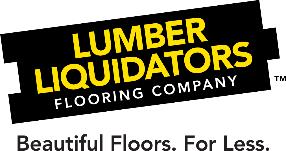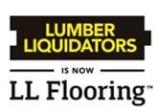In November 2018, the plaintiffs filed a motion requesting conditional certification for all store managers and store managers in training who worked within the federal statute of limitations period. In May 2019, the magistrate judge granted plaintiffs’ motion for conditional certification. The Company filed objectionslitigation is in the discovery stage, which was extended by the Court from May 2020 to December 18, 2020, and due to COVID-19 complications impacting discovery, the magistrate judge’s class certification decision with the district judge. That motion is currently pending.deadline has again been extended to March 31, 2021.
The Company disputes the Mason Putative Class Employees’ claims and continues to defend the matter vigorously. Given the uncertainty of litigation, the preliminary stage of the case and the legal standards that must be met for, among other things, class certification and success on the merits, the Company cannot reasonably estimate the possible loss or range of loss, if any, that may result from this action and therefore no accrual has been made related to this. Any such losses could, potentially, have a material adverse effect, individually or collectively, on the Company’s results of operations, financial condition and liquidity.
Savidis Lawsuit
On April 9, 2020, Lumber Liquidators was served with a lawsuit filed by Tanya Savidis, on behalf of herself and all others similarly situated (collectively, the “Savidis Plaintiffs”). Ms. Savidis filed a purported class action lawsuit in the Superior Court of California, County of Alameda on March 6, 2020, on behalf of all current and former Lumber Liquidators employees employed as non-exempt employees. The complaint alleges violation of the California Labor Code including, among other items, failure to pay minimum wages and overtime wages, failure to provide meal periods, failure to permit rest breaks, failure to reimburse business expenses, failure to provide accurate wage statements, failure to pay all wages due upon separation within the required time, and engaging in unfair business practices (the “Savidis matter”). On or about May 22, 2020, the Savidis Plaintiffs provided notice to the California Department of Industrial Relations requesting they be permitted to seek penalties under the California Private Attorney General Act for the same substantive alleged violations asserted in the Complaint. The Savidis Plaintiffs seek certification of a class action covering the prior four-year period prior to the filing of the complaint to the date of class certification (the “California Employee Class”), as well as a subclass of class members who separated their employment within three years of the filing of the suit to the date of class certification (the “Waiting Time Subclass”). The Savidis Plaintiffs did not quantify any alleged damages but, in addition to attorneys’ fees and costs, seek statutory penalties, unspecified amounts for unpaid wages, benefits, and penalties, interest, and other damages.
The Company disputes the Savidis Putative Class Employees’ claims and intends to defend the matter vigorously. Given the uncertainty of litigation, the preliminary stage of the case and the legal standards that must be met for, among other things, class certification and success on the merits, the Company cannot estimate the reasonably possible loss or range of loss, if any, that may result from this action and therefore no accrual has been made related to this. Any such losses could, potentially, have a material adverse effect, individually or collectively, on the Company’s results of operations, financial condition and liquidity.
KramerVisnack Lawsuit
On or about November 17, 2017, Robert J. Kramer,June 29, 2020, Michael Visnack, on behalf of himself and all others similarly situated (collectively, the “Kramer“Visnack Plaintiffs”) filed a purported class action lawsuit in the Superior Court of California, County of SacramentoSan Diego, on behalf of all current and former store managers, alland others with similar job functions and/or titles and all current and former employees classified as non-exempt or incorrectly classified as exempt and who worked for the Company in the State of California (collectively, the “CSM Employees”) allegingsimilarly situated. The Complaint alleges violation of the California Labor Code including, among other items, failure to pay wages and overtime, wage statement violations, meal and rest break violations, unpaid reimbursements and waiting time, and engaging in unfair business practices (the “Kramer“Visnack matter”). The KramerVisnack Plaintiffs seek certification of the CSM Employees for a class action covering the prior four-year period prior to the filing of the complaintbeginning September 20, 2019, through the dispositiondate of this action for the CSM Employees who currently are or were employed in California (the “California SM Class”). On or about February 19, 2019, the Kramer Plaintiffs filed a first amended complaint adding a claim for penalties under the California Private Attorney General Act for the same substantive alleged violations asserted in the Complaint.Notice of Class Certification, if granted. The KramerVisnack Plaintiffs did not quantify any alleged damages but, in addition to attorneys’ fees and costs, the Kramer Plaintiffsthey seek unspecified amounts for each of the causes of action such as unpaid wages and overtime wages, failure to provide meal periods and rest breaks, payroll record and wage statement violations, failure to reimburse expenses and waiting time, liquidated and/or punitive damages, declaratory relief, restitution, statutory penalties, injunctive relief and other damages.damages.
In July 2019,The Company is evaluating the Company entered into a MemorandumVisnack Putative Class Employees' claims and intends to defend itself vigorously in this matter. Given the uncertainty of Understanding (“Kramer MOU”) withlitigation, the lead plaintiff in the Kramer matter. Under the termspreliminary stage of the Kramer MOU,case and the Company will pay $4.75 million to settle the claims asserted in the Kramer matter (or which could have been asserted in the Kramer matter) on behalf of all current and/or former store managers and store managers in training employed by the Company at any time between November 17, 2013 until the time of preliminary approval of the settlement by the court. The Kramer MOU is subject to certain contingencies, including the execution of a definitive settlement agreement and court approvals of the definitivelegal standards that
settlement agreement. There can be no assurance that a settlement will be finalized and approved or as to the ultimate outcome of the litigation. If a final, court-approved settlement is not reached, the Company will defend the matter vigorously and believes there are meritorious defenses and legal standards that must be met for, among other things, class certification and success on the merits. Ifmerits, the parties are unableCompany cannot estimate the reasonably possible loss or range of loss, if any, that may result from this action and therefore no accrual has been made related to finalize the settlement, the Kramer matterthis. Any such losses could, potentially, have a material adverse effect, individually or collectively, on the Company’s results of operations, financial condition and results of operations. However, as a result of these developments, the Company has determined that a probable loss has been incurred and has recognized a net charge to earnings of approximately $4.75 million within selling general and administrative expense during the quarter ended June 30, 2019.liquidity.
Antidumping and Countervailing Duties Investigation
In October 2010, a conglomeration of domestic manufacturers of multilayered wood flooring (“Petitioners”) filed a petition seeking the imposition of antidumping (“AD”) and countervailing duties (“CVD”) with the United States Department of Commerce (“DOC”) and the United States International Trade Commission (“ITC”) against imports of multilayered wood flooring from China. This ruling applies to companies importing multilayered wood flooring from Chinese suppliers subject to the AD and CVD orders. The Company’s multilayered wood flooring imports from China accounted for approximately 7%6% and 8%7% of its flooring purchases in 20182019 and 2017,2018, respectively. The Company’s consistent view through the course of this matter has been, and remains, that its imports are neither dumped nor subsidized.
As part of its processes in these proceedings, following the original investigation, the DOC conducts annual administrative reviews of the CVD and AD rates. In such cases, the DOC will issue preliminary rates that are not binding and are subject to comment by interested parties. After consideration of the comments received, the DOC will issue final rates for the applicable period, which may lag by a year or more. As rates are adjusted through the administrative reviews, the Company adjusts its payments prospectively based on the final rate. The Company will begin to pay the finalized rates on each applicable future purchase when recognized by U.S.United States Customs and Border Protection.
The DOC made its initial determinations in the original investigation regarding CVD and AD rates on April 6, 2011 and May 26, 2011, respectively. On December 8, 2011, orders were issued setting final AD and CVD rates at a maximum of 3.3% and 1.5%, respectively. These rates became effective in the form of additional duty deposits, which the Company has paid, and applied retroactively to the DOC initial determinations.
Following the issuance of these orders, a number of appeals were filed by several parties, including the Company, with the Court of International Trade (“CIT”) challenging, among other things, certain facts and methodologies that may impact the validity of the AD and CVD orders and the applicable rates. The Company participated in appeals of both the AD order and CVD order. On February 15, 2017, the Court of Appeals for the Federal Circuit (“CAFC”) vacated the CIT’s prior decision and remanded with instructions to the DOC to recalculate its AD rate. On remand, the DOC granted a 0% AD rate to eight Chinese suppliers, but did not exclude them permanently from the AD order. Nor did the CIT terminate the AD order. In July 2018, the CIT issued a judgment sustaining the DOC’s calculation of 0% for the eight suppliers, but also excluded three of them from the AD order. Certain Chinese suppliers and the Petitioners have appealed this judgment to the CAFC. The Company is evaluating the impact of the CIT’s judgment on its previously recorded expense related to the AD rates in the original investigation and subsequent annual reviews discussed below. Because of the length of time for finalization of rates as well as appeals, any subsequent adjustment of CVD and AD rates typically flows through a period different from those in which the inventory was originally purchased and/or sold.
In the first DOC annual review in this matter, AD rates for the period from May 26, 2011 through November 30, 2012, and CVD rates from April 6, 2011 through December 31, 2011, were modified to a maximum of 5.92% and a maximum of 0.83%, respectively, which resulted in an additional payment obligation for the Company, based on best estimates and shipments during the applicable window, of $0.8 million. The Company recorded this as a long-term liability on its accompanying condensed consolidated balance sheet and in cost of sales in its second quarter 2015 financial statements. These AD rates were appealed to the CIT by several parties, including the Company. On remand from the CIT, the DOC has reduced the AD rate to a maximum of 0.73%. In June 2018, the CIT sustained the reduced AD rate of a maximum of 0.73% but did remand back to the DOC the issue regarding the calculation of the electricity

